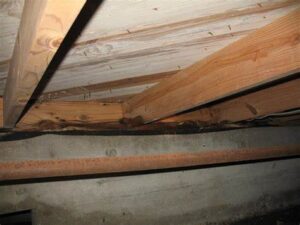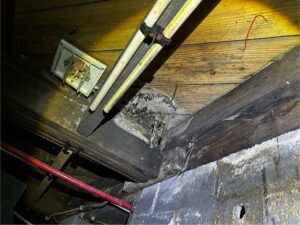
Title: What Causes Floor Sagging and How to Fix It 7 Reasons Why It’s Important to Hire a Very Good Home Inspector
Have you noticed your floors aren’t quite level anymore? Maybe furniture wobbles where it didn’t before, or you feel a dip when walking through a room. Sagging floors are more than just a cosmetic issue—they can point to serious structural problems. Understanding what causes floor sagging and how to fix it is key to keeping your home safe, sound, and comfortable.
Sagging floors usually indicate a problem with your home’s foundation or support structure. Here are the most common culprits:
One of the biggest enemies of wood is moisture. Over time, water damage can cause joists and beams to rot or weaken, leading to floors that dip or feel soft underfoot. This is especially common in crawl spaces and basements with poor drainage or ventilation.
Older homes may not have been built with today’s structural standards. In some cases, beams and joists were undersized for the loads they were meant to carry. Over time, natural settling or years of wear can lead to deflection (sagging) in the floor.
If the foundation settles unevenly or begins to crack, it can throw off the balance of the entire home. When this happens, floor joists may separate from support beams, causing dips and uneven surfaces.
Termites and carpenter ants love to chew through wooden supports. If left unchecked, they can seriously weaken the structural integrity of joists and beams.
Sometimes, sagging occurs after load-bearing walls are removed or altered without proper reinforcement. A misstep in remodeling can compromise your floor’s ability to stay level.
Fixing sagging floors requires a good diagnosis and, often, a bit of professional help. Here’s how the process usually goes:
Start by getting a thorough inspection from a licensed contractor or structural engineer. They’ll determine what’s causing the sag—whether it’s moisture, pests, foundation settling, or something else.
It’s important to fix the underlying issue before repairing the floor:
Moisture problems? Install proper drainage, vapor barriers, or a dehumidifier in the crawl space.
Foundation issues? You might need piers, jacks, or even underpinning.
Pests? Hire an exterminator and repair the damaged wood.
If the joists are damaged or undersized, they may need to be:
Sistered (paired with new joists for extra support)
Re-leveled using adjustable steel jacks
Replaced entirely if severely damaged
Adding new support beams or jack posts beneath sagging areas can help redistribute weight and re-level the floor. This is often done in basements or crawl spaces.
Once the structural repairs are done, you may need to level out the surface—especially if you’re dealing with hardwood or tile. This could involve re-sanding, adding leveling compound, or reinstalling flooring.
Sagging floors are more than just a minor inconvenience—they’re a warning sign. With a proper inspection and timely repairs, you can not only fix the sag but prevent further damage and protect your home’s value.
If you’ve noticed uneven floors, don’t wait. The sooner you act, the easier (and cheaper) it is to fix the problem.
When it comes to your home, the floors are literally the foundation of how your space looks and feels. Choosing the right flooring contractor ensures your investment is protected, your floors are properly installed, and potential problems are avoided down the line.
Here’s what to keep an eye on when hiring:
Not all flooring contractors are the same. Some specialize in hardwood, others in tile, vinyl, carpet, or refinishing. Make sure they have specific experience with the type of floor you’re installing or repairing. Ask for before-and-after photos, or even to speak with past clients if possible.


